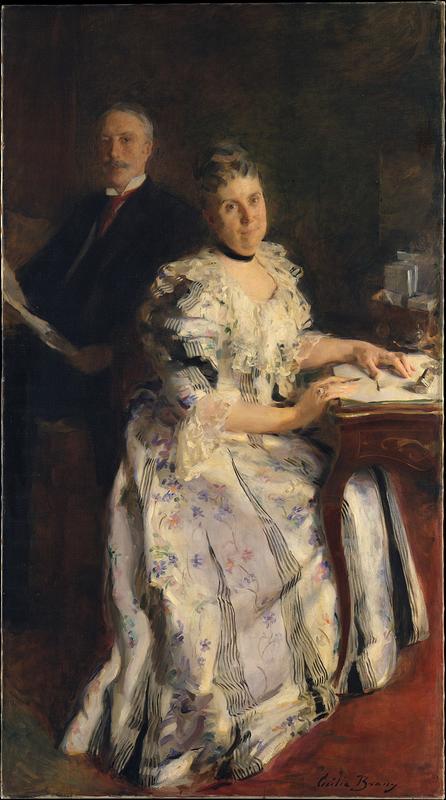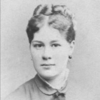More about Mr. and Mrs. Anson Phelps Stokes

Contributor
Anson Phelps Stokes was a yachtsman, warship designer, and anti-imperialist with a net worth to give Koons or Hirst a run for their money.
Stokes's astonishing wealth bought him a house on Madison Avenue (before it was cool), four yachts, and a Massachusetts property with an attic big enough for bike rides. He and his family moved to Staten Island, only to leave when the area became unfashionably overrun with non-millionaires. In spite of Anson’s eccentricities, talented Philadelphian Cecilia Beaux focused on the lesser-known Stokes for this portrait. Anson’s wife and cousin Helen Louisa may not have a Wikipedia page, but here she takes center stage.
The Victorian era was not fond of female empowerment. Certain medical professionals of the times suggested that the ovaries were impeded by excessive study. Renowned doctor William Acton postulated that most women were chaste mothers, dutifully devoid of lust. In light of these commonly-held beliefs, it is little wonder that Cecilia Beaux’s central placement in the Stokes portrait was unorthodox. John Singer Sargent had previously used a similar setup for his portrait of the pair’s son, Isaac Newton, and daughter-in-law, Edith. In this revolutionary tableau, Edith is even more prominent than Helen Louisa, holding her straw hat just in front of her husband’s member.
Phallic metaphors aside, Edith Stokes was a whirlwind, matching her father-in-law Anson’s headstrong nature. Anson’s penchant for adventure lost him a leg when he attempted to ride Dingley, a horse with a temper and an attitude problem. Similarly, Edith Stokes was nicknamed “Fiercely,” a moniker far better than her husband’s, “Mr. Asparagus Head.” Her disregard for tradition led her to marry late, adopt, and don the street attire of the so-called “New Woman.” Cecilia Beaux also painted Edith, perhaps due to a shared appetite for independence. Beaux would go on to depict many a blue-blood, but her portraits of Edith and Helen Louisa stick out as celebrations of wives, often underestimated in Victorian high society.
Sources
- “Anson Phelps Stokes.” Wikipedia. Accessed July 31, 2018. July 27, 2018. https://en.wikipedia.org/wiki/Anson_Phelps_Stokes.
- Heyman, Stephen. “The Haves Who Have.” The New York Times Style Magazine. March 23, 2012. Accessed July 31, 2018. https://tmagazine.blogs.nytimes.com/2012/03/23/the-haves-who-gave/?mtrr….
- Hughes, Kathryn. “Gender Roles in the 19th Century.” May 15, 2014. British Library. Accessed July 31, 2018. https://www.bl.uk/romantics-and-victorians/articles/gender-roles-in-the….
- “Mr. and Mrs. Anson Phelps Stokes.” Metropolitan Museum of Art. 2018. Accessed July 31, 2018. https://www.metmuseum.org/art/collection/search/10128.
- Phelps, Brian. “Notable Phelps Family Members.” Phelps Family History. July 31, 2018. Accessed July 31, 2018. http://www.phelpsfamilyhistory.com/bios/anson%20phelps%20stokes.asp.











